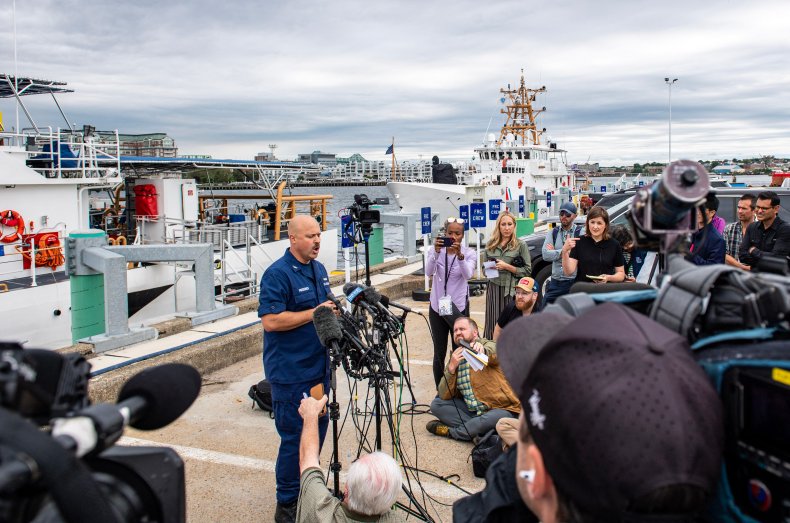A submersible traveling to see the Titanic wreckage disappeared on Sunday, and as crews continue to search for it, concerns about why it has not resurfaced have arisen.
Officials with the U.S. Coast Guard said Tuesday that they are searching an area covering 10,000 miles, but there have been no signs of the vessel, according to the Associated Press.
"For some time, we have been unable to establish communications with one of our submersible exploration vehicles which is currently visiting the wreck site of the Titanic," OceanGate Expeditions, which owns the missing submersible, told Newsweek on Tuesday. "Our entire focus is on the well-being of the crew and every step possible is being taken to bring the five crew members back safely."
The five people aboard the missing vessel who were traveling to see the wreckage of the Titanic in the Atlantic Ocean have been identified as Captain Hamish Harding, Shahzada Dawood and his son, Suleman, Paul-Henri Nargeolet and Stockton Rush.

Simon Boxall, a professor of oceanography at the University of Southampton, spoke to Newsweek on Tuesday about ways the submersible could surface and where it could be located under the water.
"You could adjust the buoyancy...which would sort of push the submarine up or down, you could use thrusters," Boxall said. "And you can, in principle, ditch some of the ballast...which then make[s] it buoyant."
According to Boxall, there are three likely reasons why the submersible has not yet resurfaced, including issues with release mechanisms or it has lost all power.
"Number two, is that it got snagged on something," he said. "It could have snagged on an old fishing net on the seabed. It could have been on parts of the [Titanic] wreckage itself, they were going to look at the wreck after all. And of course, the unthinkable is that it's not coming back up because it has imploded. That's the unthinkable, but it's one of the three options."
Boxall also said it is likely that there is enough oxygen to last until Thursday if there is no panic.
"You can't use radios underwater, you can't use what you'd normally use on land. Underwater, none of that works," Boxall said. "GPS doesn't work underwater...they're reliant on these acoustic pings, which have very limited sort of bandwidth."
As crews continue to search for the submersible Boxall noted that sonar could be used but said it might be hard to distinguish between the vessel and wreckage.
"If they do find it, the next problem is how you recover it," Boxall said. "You need a ship that's got a lot of cable on board."
Boxall said that the different issues with finding the submersible and being able to rescue it show the "enormity of this rescue operation."








